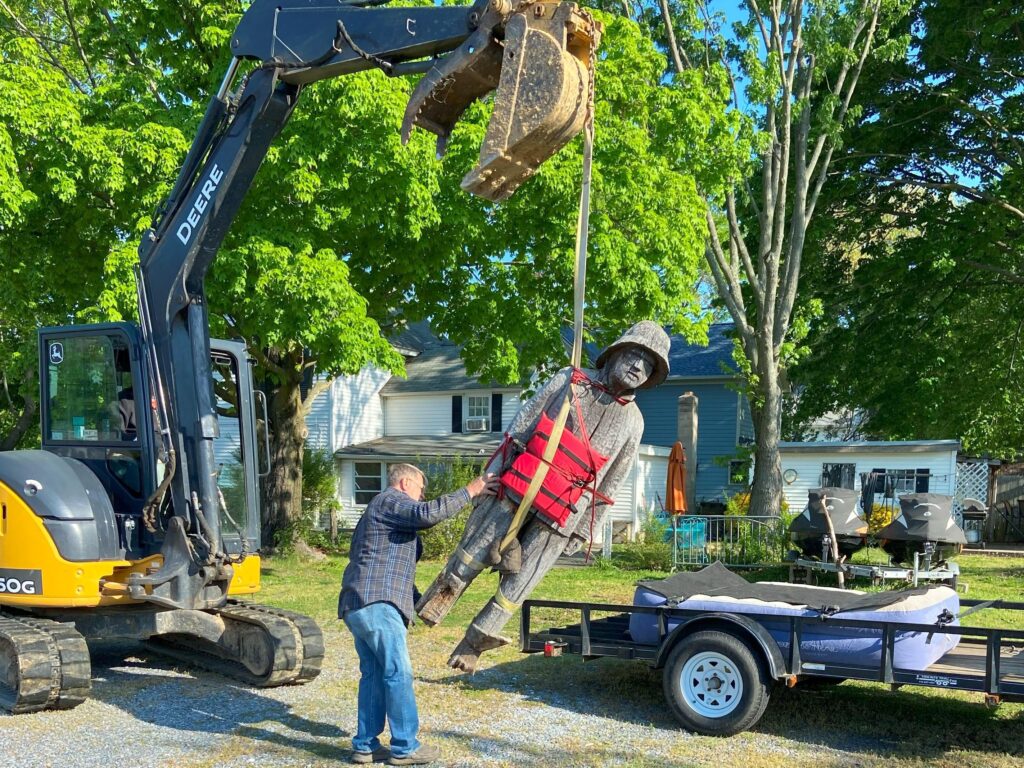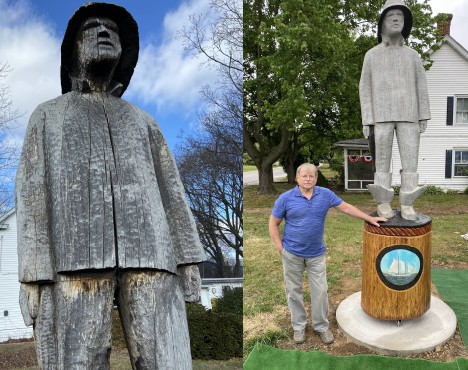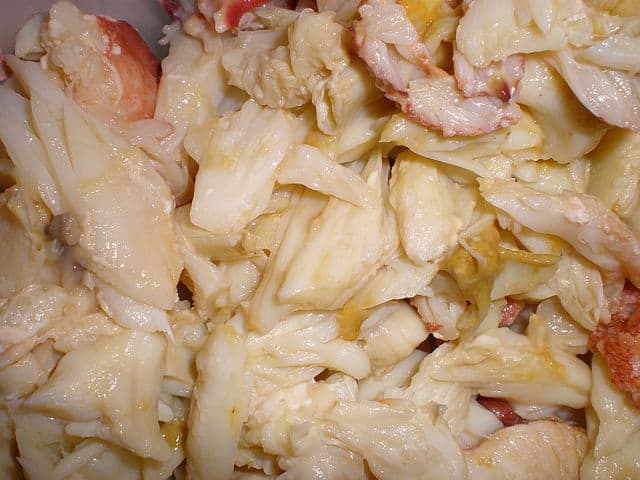It’s always made a strong first impression on visitors to the upper Eastern Shore town of Rock Hall: the wood-carved statue of an old-fashioned waterman known as “Old Salt”.
But the waterman was looking more weather-beaten than the town would have liked.
On June 22, Rock Hall celebrated the return of its beloved “Old Salt” following several months of restoration work funded by a grant through Maryland’s Department of Housing and Community Development. As the new statue was unveiled, local leaders acknowledged the generations of watermen that still define the town’s unique Chesapeake culture.
Though the exact timeline is unknown, “Old Salt” was originally carved by local artist Jacquin “Jac” Smolens in the 1970s and has presided over the intersection of Main Street and Route 20 since the 1980s. Donning the signature foul-weather gear and boots, the wooden waterman commemorates the real-life workers of the Eastern Shore seafood industry.
After decades of weathering, the statue had begun to crack and decay. Deterioration of the wood, particularly at its base, threatened to topple “Old Salt.” In April 2023, he was removed and brought to the shop of Eastern Shore restoration artist John Elburn, 72, whose work since childhood has been inspired by waterfowl, seafood, and those that make their living on the Chesapeake Bay.

After being hoisted by crane, Old Salt spent time in Elburn’s shop. The artist sanded the statue, filled cracks and crevices in the wood, fixed his hat and carved brand new boots (which function as the pedestal Old Salt sits on). Then Old Salt was carefully returned to his perch at Main Street and Route 20 for the unveiling.
The Bay has been crucial in the development of Rock Hall since the town’s establishment in 1675. In colonial times, it served as the terminus for a passenger ferry connecting bustling Annapolis to the Eastern Shore. The steady flow of travelers streaming through Rock Hall helped establish a tourism industry in Kent County.
In addition to passengers, tobacco, seafood, and agricultural products like corn and soybeans passed through the ports of Rock Hall. Seafood quickly became the largest industry, and blue crabs, oysters, and fish remain the area’s primary exports.
“Old Salt” depicts a waterman of days past, but the modern workers driving this industry still use some of the same methods. In the cold months, wooden deadrises still harvest oysters with tongs and rakes. Summers bring blue crabs dangling from trotlines in addition to the Maryland-style crab traps.
While these traditional methods are still employed because of their efficacy, sticking to the “old ways” of working the waters also functions to preserve the history of the Eastern Shore and its inhabitants.
“Old Salt” captures not only the Bay-faring history of Rock Hall but the persistence of its unique culture, one trademarked by dedication to one’s profession as well as the landscape. His presence serves as a reminder of the depth of Rock Hall pride and the vibrancy of Eastern Shore culture.
-Alaina Perdon




